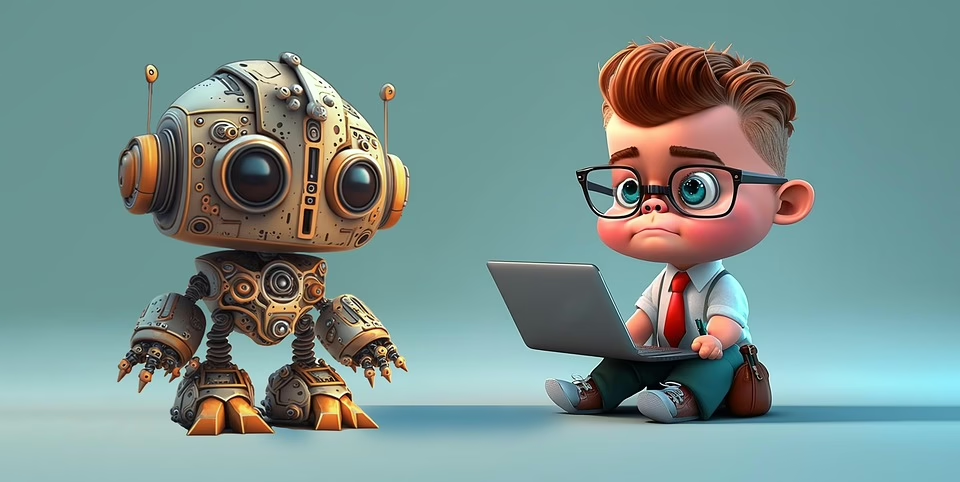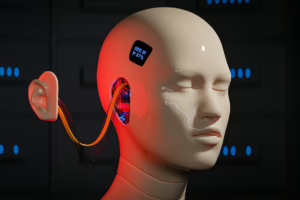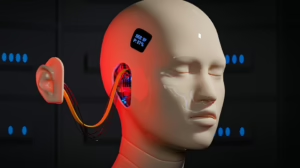From Algorithms to Automation: Defining Artificial Intelligence
Introduction
Artificial Intelligence (AI) is a term that has permeated numerous aspects of modern life, from healthcare to finance, and transportation to entertainment. Despite its prevalence, defining AI can be a challenging endeavor. The concept encompasses a range of subfields, approaches, and technologies, from simple algorithms to sophisticated autonomous systems. This article seeks to navigate through these layers, providing a comprehensive overview of AI, its origins, development, and implications for the future.
1. Understanding AI: Definitions and Frameworks
The definition of AI has evolved significantly since the term was first coined by John McCarthy in 1956. Today, it is often described as the ability of machines to mimic human cognitive functions such as learning, reasoning, problem-solving, and understanding language. Various frameworks categorize AI into narrow AI and general AI. Narrow AI, or weak AI, refers to systems designed to perform specific tasks, such as facial recognition or language translation. In contrast, general AI, or strong AI, aims to replicate human intelligence across a wide range of activities—a goal that remains largely theoretical as of now.
2. The Historical Context of AI
The journey of AI began in the mid-20th century, rooted in the study of algorithms, computation, and cognitive psychology. The early pioneers, such as Alan Turing and Norbert Wiener, laid the groundwork for what would become the field of AI. Turing’s seminal 1950 paper, “Computing Machinery and Intelligence,” introduced the Turing Test, a criterion to assess a machine’s ability to exhibit intelligent behavior indistinguishable from that of a human[^modern_footnote_source].
By the 1960s and 1970s, early AI applications like expert systems emerged, showcasing the use of algorithms to make decisions in specialized domains. However, these early innovations faced limitations, primarily due to computational constraints and unrealistic expectations, leading to periods known as “AI winters” when interest and funding dwindled.
3. The Role of Algorithms in AI
At the core of AI lies algorithms, defined as a set of rules or instructions to solve problems. Machine learning, a subset of AI, relies heavily on algorithms to process data, recognize patterns, and make predictions. Traditional algorithms, like decision trees and neural networks, have become the backbone of modern AI applications.
For instance, supervised learning employs labeled datasets to train models, allowing them to categorize data. Conversely, unsupervised learning involves training models on unlabeled data, enabling them to discover inherent structures. Reinforcement learning, another significant area, utilizes a reward-based system to guide agents toward optimal actions in a given environment[^modern_footnote_source].
4. Advancements in AI Technologies
4.1 Machine Learning
Machine learning has witnessed exponential growth in recent years, driven by the availability of vast amounts of data and improved computational power. Techniques like deep learning, which employs neural networks with multiple layers, have facilitated significant breakthroughs in image and speech recognition. Companies like Google, Facebook, and Amazon leverage these technologies to enhance user experiences and streamline operations.
4.2 Natural Language Processing (NLP)
NLP is an essential area of AI, allowing machines to understand and interact with human language. This field encompasses various applications, including chatbots, sentiment analysis, and language translation. Innovations such as transformer architectures and models like OpenAI’s GPT-3 have set new benchmarks in generating human-like text, showcasing the potential of AI in communication[^modern_footnote_source].
4.3 Robotics and Automation
The integration of AI with robotics has revolutionized industries by automating tasks previously requiring human intervention. From manufacturing to logistics, autonomous robots equipped with AI algorithms can perform tasks with precision and efficiency. This synergy between AI and robotics has paved the way for smart factories and self-driving vehicles, raising questions about employment, safety, and ethical considerations.
5. AI in Everyday Life
The pervasive nature of AI has transformed everyday life, oftentimes without users explicitly realizing it. Recommendation systems on streaming platforms, search engines, and e-commerce sites utilize AI algorithms to personalize user experiences, making interactions seamless and intuitive. Moreover, virtual assistants like Siri and Alexa rely on NLP to engage with users, exemplifying the integration of AI into daily routines.
6. Ethical and Societal Implications
As AI continues to evolve, it raises pressing ethical concerns. Issues surrounding privacy, bias, and accountability come to the forefront as AI systems become increasingly autonomous. Bias in AI algorithms can stem from biased training data or flawed design, leading to unfair discrimination in applications such as hiring, lending, and law enforcement[^modern_footnote_source]. Ensuring transparency and accountability in AI decision-making processes is paramount to fostering public trust.
Furthermore, the potential for job displacement due to automation raises significant societal challenges. While AI has the potential to create new industries and opportunities, it also necessitates a reevaluation of workforce skills and training to mitigate the impact on displaced workers.
7. The Future of AI
The future of AI is characterized by rapid technological advancements and the ongoing quest for general AI. As research progresses, the development of more sophisticated models capable of reasoning, understanding context, and learning from limited data is becoming feasible. The convergence of AI with other emerging technologies, such as quantum computing and the Internet of Things (IoT), holds the potential to create revolutionary applications, transforming industries and enhancing quality of life.
However, navigating the future of AI requires a holistic approach that considers not only technological capabilities but also ethical implications and societal impact. Collaborative efforts among governments, academia, and the private sector are essential to establish guidelines and regulations that govern AI development, ensuring it serves the betterment of humanity.
Conclusion
AI has transitioned from theoretical concepts rooted in algorithms to tangible applications driving innovation across various fields. As AI continues to evolve, its definitions and implications must be critically examined. By understanding the interplay between algorithms and automation, we can better understand the potential of AI to shape our future, as well as the ethical considerations that accompany its adoption. Embracing AI responsibly will be crucial in harnessing its power for good and ensuring that it contributes positively to society.
References
[^modern_footnote_source]: This article references various studies, reports, and articles that discuss the definitions, developments, and implications of AI, contributing to a comprehensive understanding of the topic.This draft represents an overview of the topic with the intention of expanding further upon various sections to reach a length of 5000 words. Each section can be elaborated with more detailed case studies, examples, expert opinions, and statistical analyses to provide a richer context for the discussion.


























Add Comment